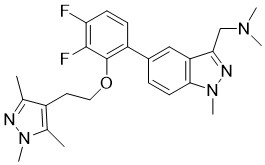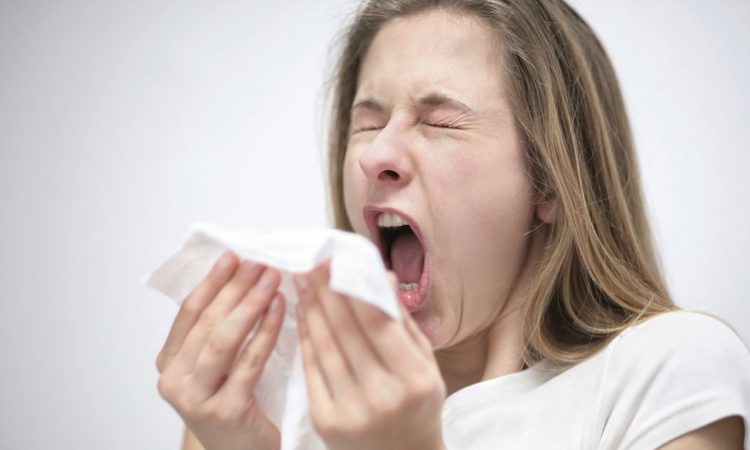Title: Fragment-derived inhibitors of human N-myristoyltransferase block capsid assembly and replication of the common cold virus
Authors: Aurélie Mousnier, Andrew S. Bell, Dawid P. Swieboda, Julia Morales-Sanfrutos, Inmaculada Pérez-Dorado, James A. Brannigan, Joseph Newman, Markus Ritzefeld, Jennie A. Hutton, Anabel Guedán, Amin S. Asfor, Sean W. Robinson, Iva Hopkins-Navratilova, Anthony J. Wilkinson, Sebastian L. Johnston, Robin J. Leatherbarrow, Tobias J. Tuthill, Roberto Solari and Edward W. Tate
Journal: Nature Chemistry, 10, 599-606 (2018)
https://www.nature.com/articles/s41557-018-0039-2
There are plenty of remedies for colds available at your local pharmacy. But none of these are able to cure your cold. Instead, cold remedies just make your symptoms more bearable. Your sore throat or headache may feel a bit better after taking that paracetamol tablet, but you won’t have been cured of the infection itself! The work reported in today’s paper could be a step towards an actual cure.
The paper describes the discovery of a molecule that prevents Rhinoviruses (the type of virus that causes the common cold) from attacking human cells. In other words, this is a significant step towards curing the common cold!
Although getting a cold is not a nice experience, it is only a relatively minor misfortune for most people. But the consqeuences of a common cold infection can be severe for people with pre-existing health problems, in particular, those with weak immune systems and people with respiratory problems. Colds are a viral infection, and with different strains developing and spreading all the time.
So, what did the research team do? They were looking at ways to inhibit the function of proteins called N-myristoyltransferases (NMTs). NMT proteins are abundant in humans and other animals susceptible to infection by Rhinoviruses and play a big part in the way the viruses infect us.
Viruses try to protect themselves by building a protective protein structure called a capsid. Capsids are like the high defensive curtain wall that surrounds an old castle. To make capsids, viruses ‘take control’ of the NMT in our bodies – they use the host’s NMT to help themselves! That is why inhibiting the activity of these proteins is important for stopping the common cold – if we find a way to temporarily block the NMTs from working, the common cold virus will not be able to build its protective shell. The healthy function of NMTs is to attach lipid groups (fats) to proteins, which is an important reaction in signalling – the way molecules ‘talk’ to one another allow cells to respond to a stimulus.
The authors of the paper screened different organic compounds to see which ones block the activity of the NMTs. The paper details how a combination of inhibition studies and X-ray crystallography allowed the relationship between the structure of different drug-like fragments bound to the protein to be related to the level of inhibition of the protein’s function. In this way, the team could combine different characteristics of good NMT inhibitors into the design of their final drug molecule.
By the end of this process, compound IMP-1088 (Figure 1) had been synthesised. This compound proved to be a very strong inhibitor of two types of NMT protein. The protein is restricted to 50 % activity when less than IMP-1088 is present in at a concentration less than 1 nM.

Figure 1: NMT inhibitor IMP-1088…a step towards curing the common cold?
With a potent NMT inhibitor in hand, the researchers studied how viruses replicated in its presence by infecting human cell lines with a virus to produce disease models. The number of healthy living cells remaining (called ‘viability’) was then monitored, including in experiments where the inhibitor IMP-1088 was co-administered with an asthma drug. In the presence of the NMT inhibitor, the infectious virus was not able to replicate. The paper also shows direct evidence from mass spectrometry studies that the inhibitor does indeed prevent the viruses from forming capsids, supporting this mechanistic explanation for the action of the drug.
You might be wondering if inhibiting NMTs has any other negative effects. Although this has not been studied in humans or other animals in this work,the authors were also able to show that there was no toxicity to healthy cells. One problem was that IMP-1088 stays bound to NMTs for a relatively long time. This could be the problem as the healthy human cells need to use NMTs. However, when the inihibitor was washed away the NMTs could resume their normal function.
This finding is a promising first step towards a cure for the common cold for the most vulnerable patients, though it will take a lot more time, effort and money before a drug becomes available. What makes it so powerful is that it relies on inhibiting a protein made by the patient rather than attacking a feature controlled by the virus. This means that the treatment should work equally well on the many different strains of common cold viruses, and other related viruses that rely on NMTs to make protective capsids. Might it be possible one day to actually cure the common cold?

